What are Unifix cubes?
Unifix cubes are small cubes available in different sizes and different colours. These cubes can connect on all 6 sides. Unifix cubes help children learn maths in a real world as it provides visual and physical cues for children rather than sticking to paper and pencil. These cubes are very versatile and can be used in a variety of ways. Children love counting and making patterns with these blocks while older students can use them to make groups while multiplying and dividing.
11 activities you can do with Unifix cubes
-
Design a sequence of patterns
Unifix cubes are great for teaching patterns to your kids. They can make simple patterns like green – blue – green – blue and carry on. You can also challenge your kids with more complex patterns like blue – blue – green – green and carry on.
-
Less or more
Teaching less and more is very easy with these cubes as children can see the difference between two towers. You can play a simple game with your child to help them learn less and more. Give your child 5 interlocked cubes and keep 5 to yourself. Now take a bag with two counters coloured red and blue, now ask your child to close eyes and pick one counter, if it is red she put one cube on her tower and if it’s blue she subtract one. While playing game keep asking your child which tower has more cubes and which tower has less cubes. This game will reinforce the addition concepts and also enhance their concepts of less and more
-
Number bonds using coloured cubes
Number bonds can be quite simple with unifix cubes. Make a tower with joining 10 cubes. Use two different colours of cubes to make the number up to 10 in form of a tower, like put 5 blue cubes and 5 yellow cubes to make ten or put 6 yellow cubes and ask your child how many more red cubes they need to make it 10. Children can quickly judge it by comparing two towers length.
-
Odd and even numbers:
Let your child think of a number and count that amount of number. Put the numbers in form of pairs so every single cube has a friend. If each cube has a friend the number is even. If one cube is left out, the number is odd.
-
Favourite Colour Graph:
Divide a paper into four sections (or more) with a marker. Label each section with a choice. For example, favourite foods, traits (hair/eye colour etc.), or anything else children like. Set one colour for each section (for example if its fruits yellow cubes for apples, red cubes for strawberries etc.). Ask children to pick corresponding colour cube for their favourite fruit and stack them on the relevant section of the paper. Once all children are finished put the rows of cubes next to each other from shortest to tallest to make a 3D bar graph this will Help the students determine which option received the most votes, as well as which option received the least votes.
-
Addition, Subtraction, and Multiplication:
Make addition problems by putting cubes in two piles, then pushing them together and count how many are they all together. You can also use different colours of cubes and put the cubes for a relevant number of egg boxes. Now count them to see how many they are all together (this technique is mentioned in Singapore maths books). Make subtraction problems by starting with one pile of cubes and taking some away or use egg boxes by putting a relevant number of cubes in the box and then taking some away, ask children how many are left behind. Make multiplication problems by skip counting or adding equal groups of cubes.
-
Doubles:
Pick two colours of cubes, and count out an equal number of each. If you pick 4 purple cubes, get 4 blues as well. Join them together ask kids how many they have now? Use the words doubles word frequently as kids work.
-
Measurement:
Make a line of cubes to show how long your foot is. Who has the longest foot in the class? Whose is shortest? How long is your hand? Or how long is your book?
-
Estimating Numbers:
Ask children to pick cubes to form one hand or with two hands or How many cubes can the mum pick up in one hand? After each estimate, test your answer to see how close you got.
-
Counting activities:
Give kids one minute to link together as many sets of 5 cubes as they can. When the minute is up, put them together and count the groups by 5. Do the same with 2s, 10s, 3s, or other sets for kids to practice skip-counting.
-
Place value:
When you are teaching place value, make sets of 10 unifix cubes and leave other cubes separated as units. When adding, subtracting, regrouping, or making larger numbers, use these manipulatives to demonstrate what is happening on the paper.
Now practice the Skills:
Hope you enjoyed today’s article. feel free to ask any questions in the comment section below. Thanks
Related: Numicons: A magic wand to enhance your child’s learning!

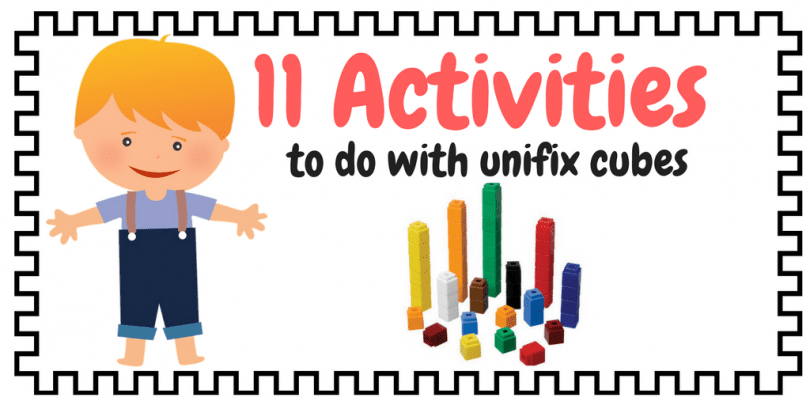


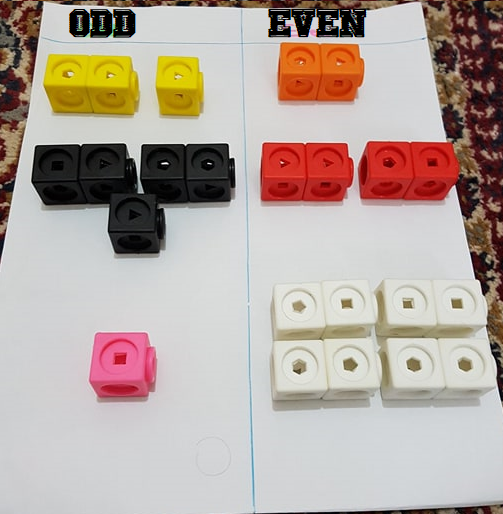



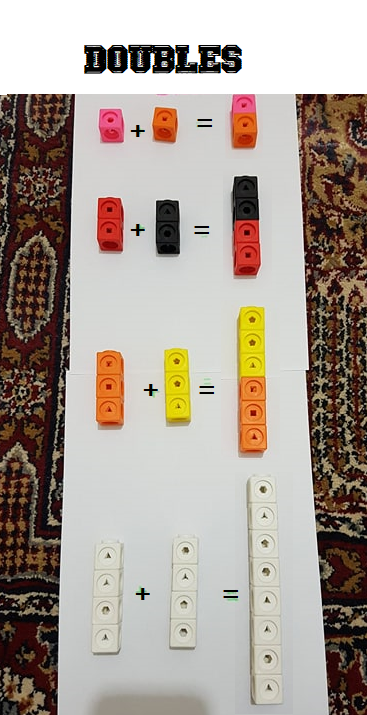

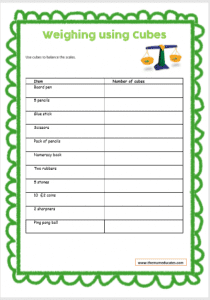
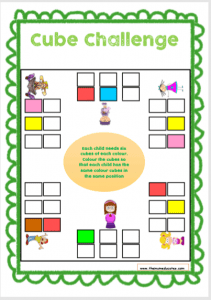
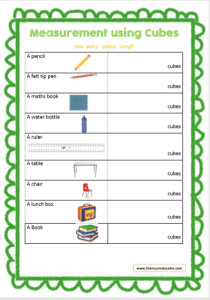
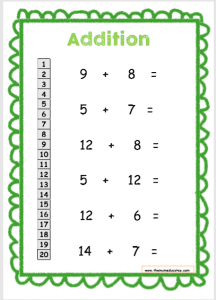
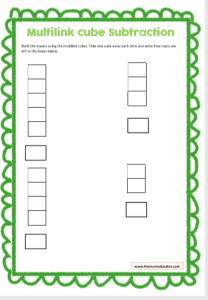
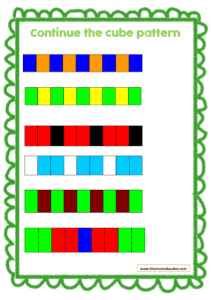
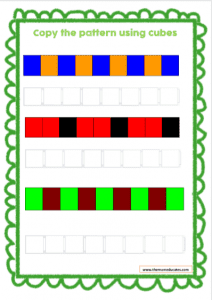
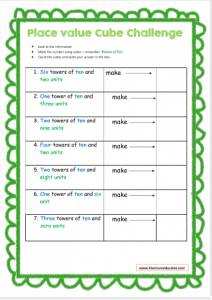
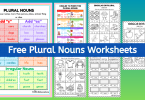
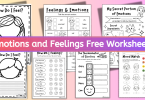
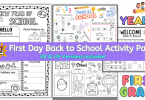
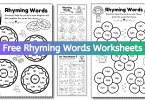
My son loved it. fun way to teach maths. Thanks.